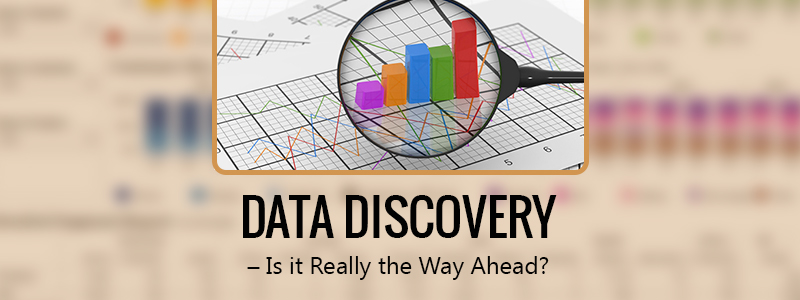From Ethernet to Wi-Fi and beyond, from the snail-pace dial-up internet to HD streaming on smartphones, it is hard to believe how far the internet has come in such a short period! Internet has been growing like greased lightning and that too is probably an understatement. Every second, millions and millions of bytes are added to the internet and right now there are around 759 million websites in the world and the number is growing at an exponential rate as this is being typed!
The total data stored on the Internet is expected to have crossed 1 Yotta-byte, that is, 1 YB = 1000zettabytes = 1trillionterabytes. Your eyes would just glaze over counting the number of zeros that would probably entail. According to an estimate, storing a yottabyte on terabyte-size disk drives would need one million city block size data-centers! Astonishing, to say the least! With so much data floating around, how do you make sense of it all?
Data Discovery
A user-driven process, data discovery helps you make sense of data by allowing you to search for specific patterns or items in the data set. Using tools such as heat-maps, pivot-tables and geographical maps, data discovery takes raw data, leverage data mining techniques to help you collect, edit and analyze your data and help you create and employ insight. A new kid in town, data discovery helps in finding hidden patterns and trends by mashing various data sources. A data warehouse is usually not needed and structure used to store and model data from disparate sources depend on company to company. Some companies are even trying out a new method called as data lakes which is an unconventional approach of storing data.
Data Discovery vs. Traditional BI
Data is the liquid gold and we are in the data rush phase right now. Data is becoming the mainstay of all business decisions. With the altering landscape of business competition, the requirement of businesses are becoming more and more complex when it comes to data.
So what’s the way out? Should you go for data discovery or traditional BI? Actually, it is not as much about one versus the other as it is about one with the other. Depending on the requirements, a business can either go for data discovery or traditional BI. However, the best approach would be to go with both! While data discovery tools focus on speed and agility, traditional BI emphasizes on providing a complete picture.
Traditional BI has been touted as a difficult tool to use and implement and that’s where data discovery tools pitch in with its fast reporting. Data discovery tool is good for making fast, one-time query, but it cannot completely overtake the traditional BI in the sense that it fails to deliver personalized and context aware analytics. Business intelligence is a great tool for getting the answers to questions that is being asked about the things that you are aware about. For instance, questions like the number of sale in a particular demography is something that can be understood through traditional BI. However, for the questions that you may not be asking, data discovery tools (that’s why the name) can help you understand about things that you may not know. For instance, questions like whether the demographics has any impact on sales.
With the above examples, it can be easily deduced that using either one of the tools may not be entirely helpful! That is precisely the reason why there is a huge trend towards organizations implementing both the approaches. If you are looking to strengthen your competitive advantage, try incorporating both the approaches for optimal results.


